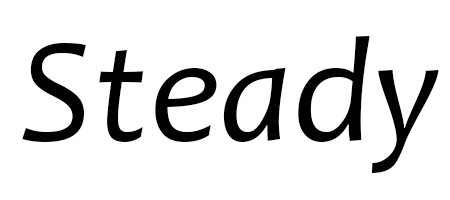Gold Plated Engraved Leaf Pattern Fountain Pen c. 1954-57
by Jim Mamoulides, October 13, 2023
 Unbranded silver engraved leaf pattern fountain pen c. 1949-53
Unbranded silver engraved leaf pattern fountain pen c. 1949-53
Bright and Gaudy
A final stop on this journey visiting leaf engraved Japanese pens is this bright gold plated example. At first look it’s as if the pen maker took the cap and barrel from a rare 1930s era Platinum silver hand engraved leaf pattern lever-fill fountain pen and dipped it in gold. It’s so bright and shiny it’s almost gaudy and I had to check it for hallmarks. Could it be gold over silver vermeil? Lacking any silver hallmarks makes me believe it’s gold plated brass.
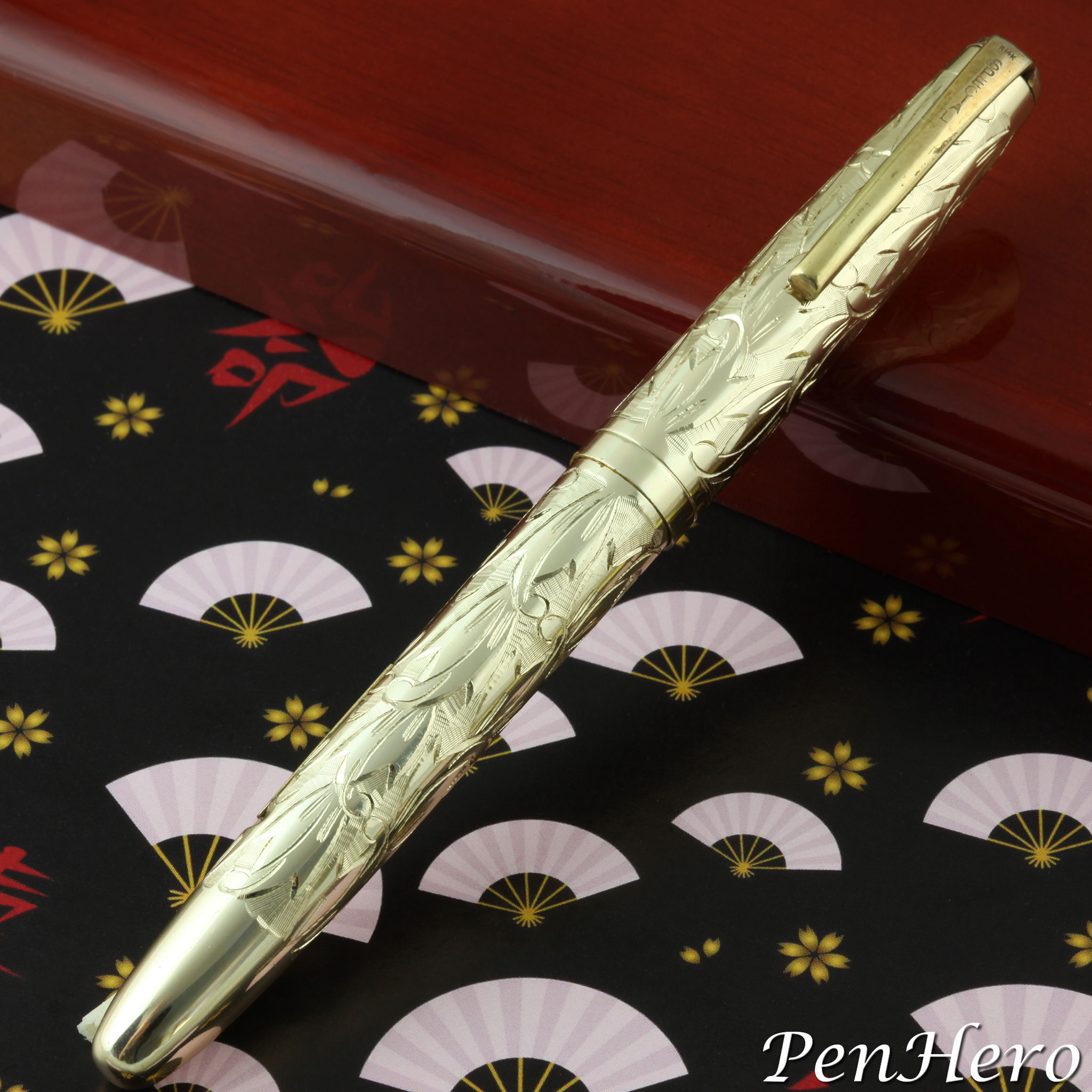 Unbranded silver engraved leaf pattern fountain pen c. 1949-53
Unbranded silver engraved leaf pattern fountain pen c. 1949-53
The engraving carefully copies the design on the original Platinum pen, including the direction of the leaf rows on the cap and barrel. Each leaf and the shading marks in between are very well executed, but it has sharper edges and therefore feels less well finished. Of the three pens, this is the least well done.
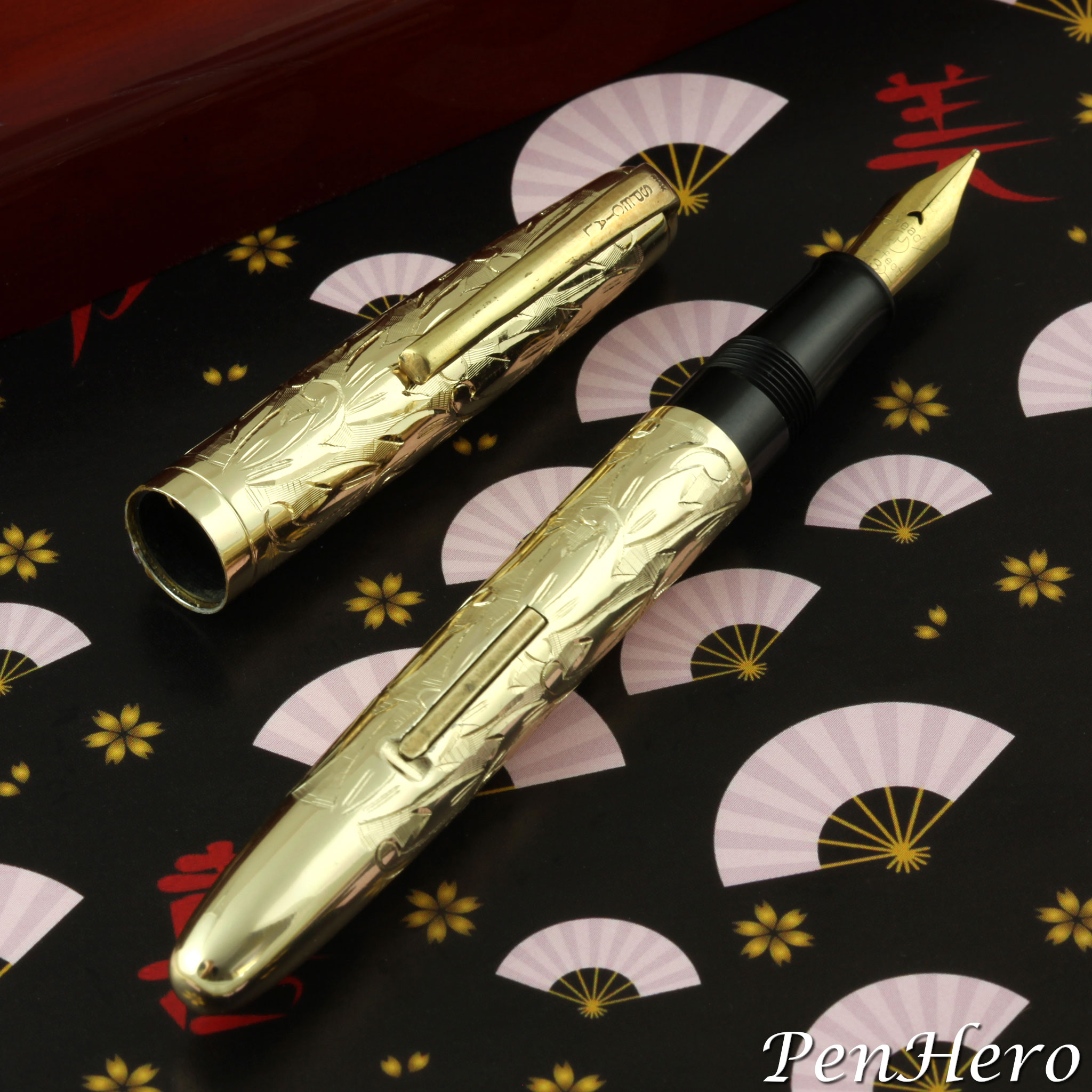 Unbranded silver engraved leaf pattern fountain pen c. 1949-53
Unbranded silver engraved leaf pattern fountain pen c. 1949-53
Like the Platinum pen, this is a lever-filler. The clip, however, is a complete departure from the original design, a simple bar shaped stamped SPECIAL and R14K to indicate gold fill rather than gold plate. In my mind leaving off an arrow style clip cheapens the look of the pen.
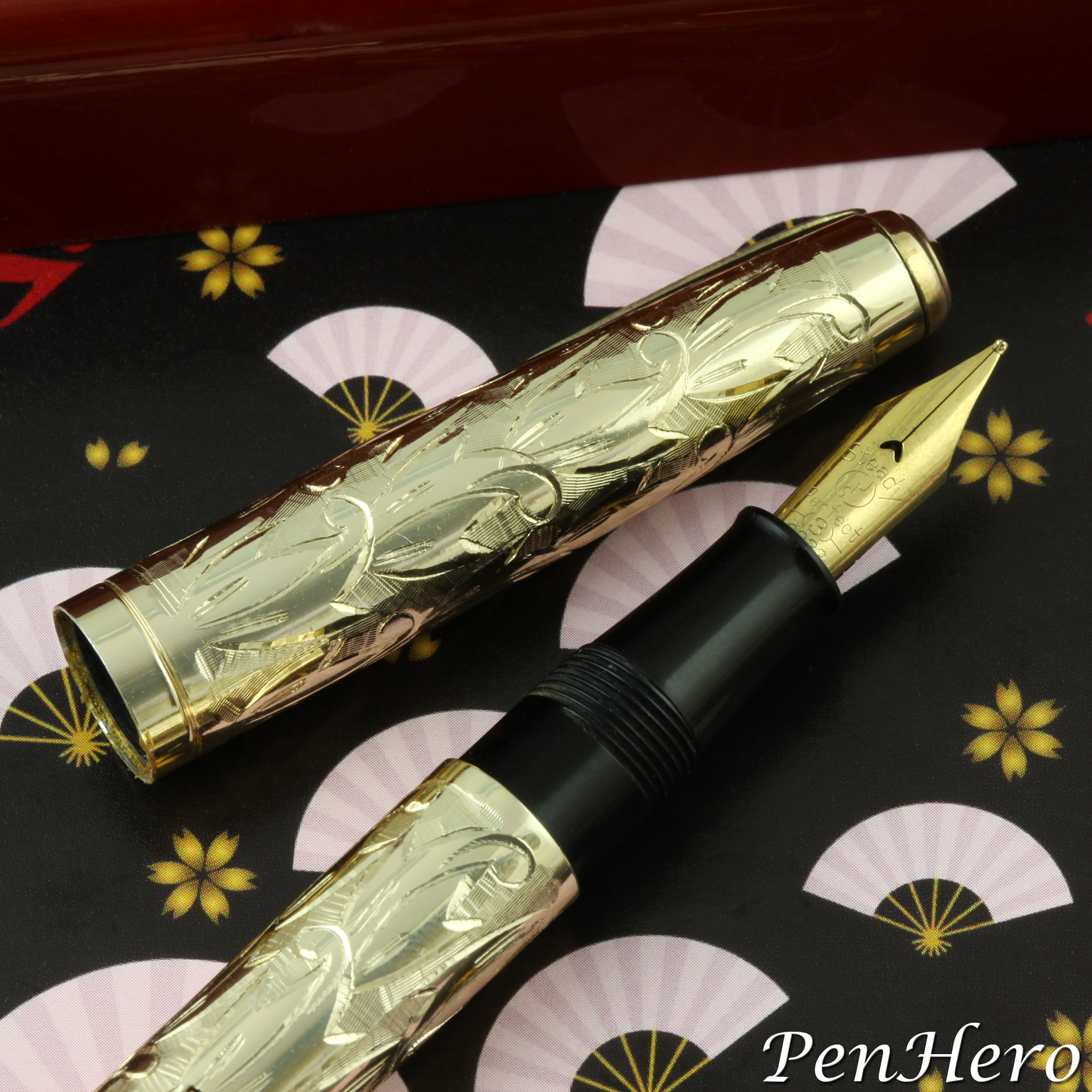 Unbranded silver engraved leaf pattern fountain pen c. 1949-53
Unbranded silver engraved leaf pattern fountain pen c. 1949-53
The nib is stamped Steady over the JIS symbol over Perfect over (3) over 3233, indicating it was made by Kabutogi Seisakusho, the company of Kabutogi Ginjiro, a leading Japanese nib maker of the mid-1950s, and the JIS mark gives it an earliest date of 1954. This is a high quality nib and improves the impression the pen makes. The lack of gold marking implies a gold plated stainless steel nib.
As with the unbranded silver leaf engraved homage to the Platinum pen, this is most likely the work of a small pen making shop with an in-house engraver or a jewelry shop. Does the Special stamped both on the clip and nib identify the pen maker? Maybe, but it’s also possible the shop sourced the nib and clip from Kabutogi Seisakusho. There is no primary information to confirm this either way.
Another Fine Job
The engraving work is very nicely done, deep and follows the Plaintum design including the shading at each leaf’s edge and the darkening lines between the leaves. The finishing left sharp edges to the touch, making the pen less fun to hold than the original.
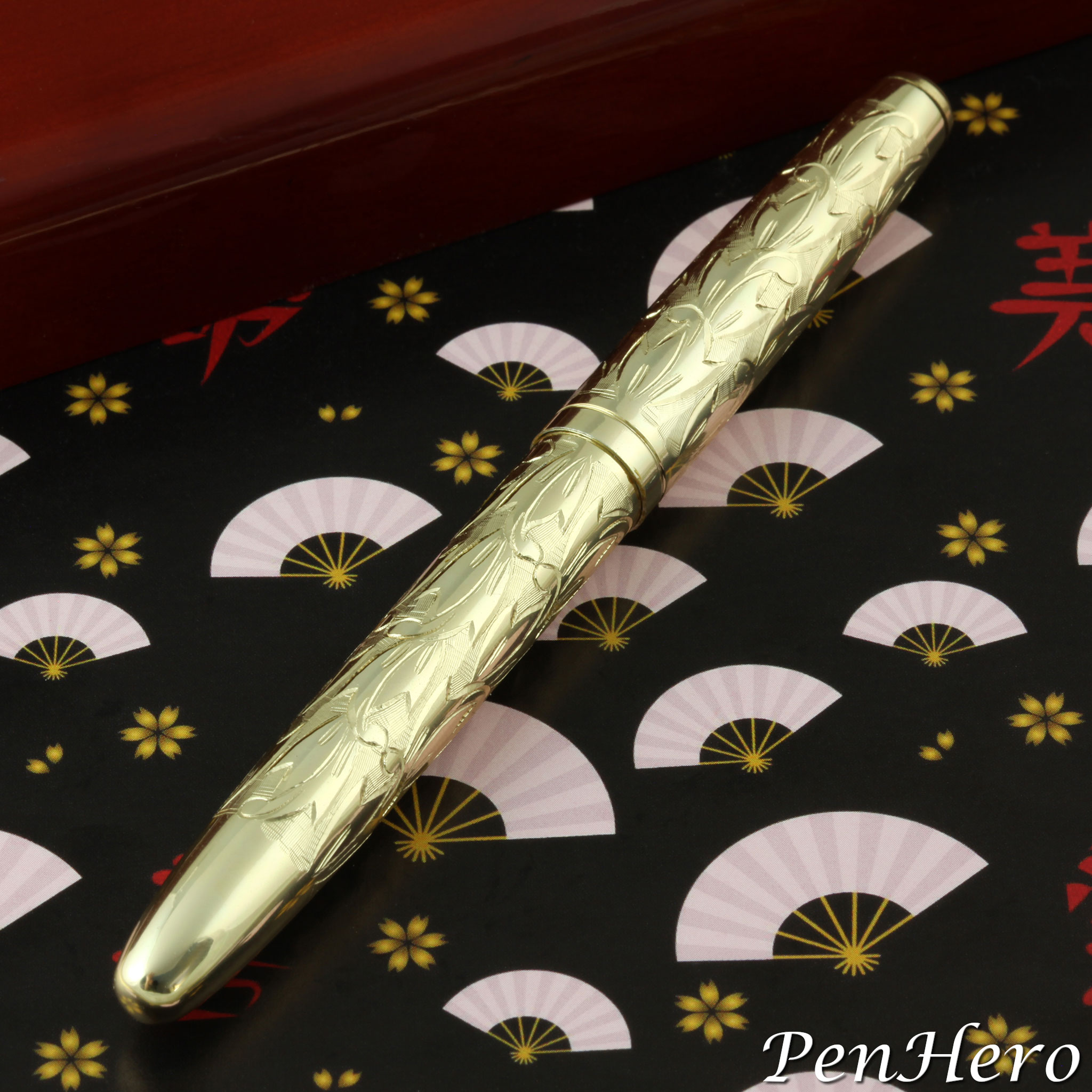 Unbranded silver engraved leaf pattern fountain pen c. 1949-53
Unbranded silver engraved leaf pattern fountain pen c. 1949-53
This is also an homage to the original Platinum pen and brings the same curiosity regarding the leaves. They are similar to a grape leaf, though just as seen on the Platinum pen, the curved tips are odd. Since here the artist is copying it makes me wonder about the original design more. What leaves are these and what is the meaning, if other pen makers spent the time to copy it? If they symbolize the leaves of a grapevine, this design also wishes a bountiful harvest or a long life to the owner. For comparison, the Platinum model can be seen in my previous article or in Fountain Pens of Japan on page 295.
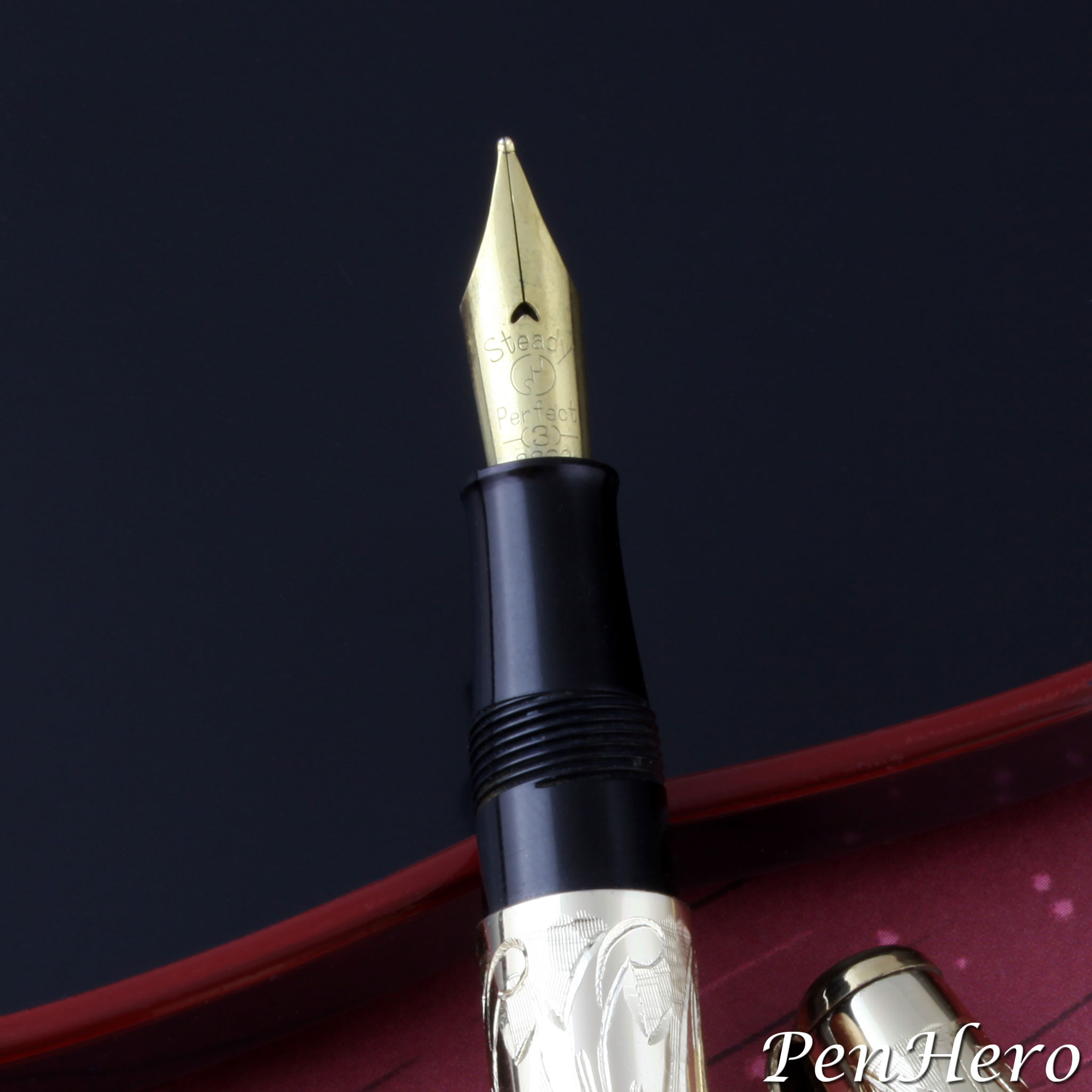 Unbranded silver engraved leaf pattern fountain pen c. 1949-53
Unbranded silver engraved leaf pattern fountain pen c. 1949-53
Fountain Pens of Japan describes the original as rare and this pen also shows the impact of the original in the Japanese pen market, possibly for a wealthy client. Also not as nice as the original, but a bright, almost gaudy homage. This would be a bright, shiny placeholder waiting on the superior Platinum version.
References
Fountain Pens of Japan by Andreas Lambrou and Masamichi Sunami, 2012 Andreas Lambrou Publishers Ltd. Epping, Essex, UK, pages 290-315
Grapevine, The Metropolitan Museum of Art
"Platinum Silver Engraved Leaf Pattern Fountain Pen c. 1930s", Jim Mamoulides, PenHero.com
Interact
Comments on this article may be sent to the author, Jim Mamoulides


